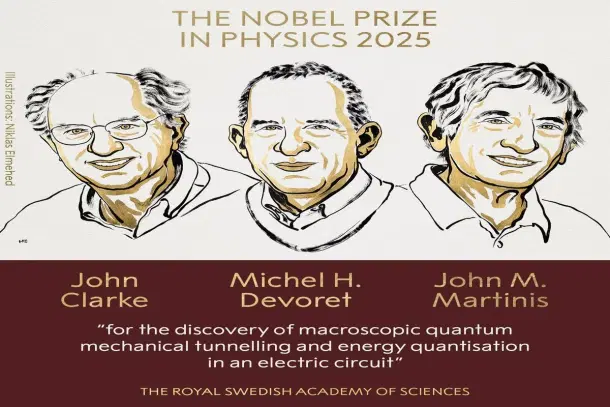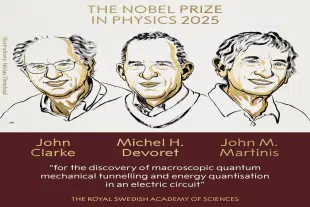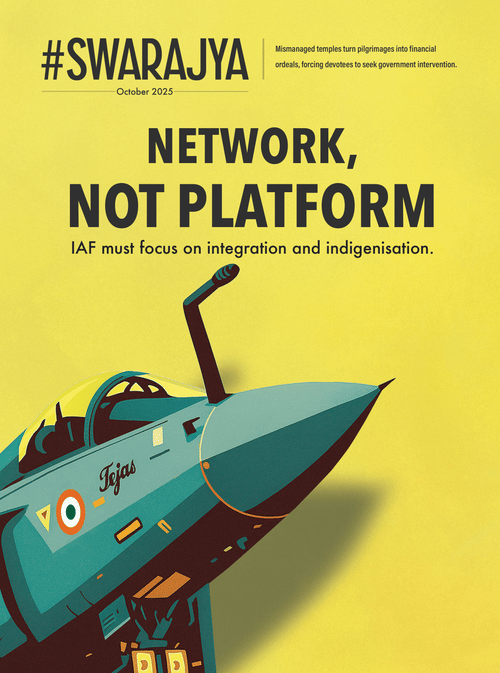News Brief
Nobel Prize In Physics 2025: Clarke, Devoret, And Martinis Honoured For Quantum Breakthroughs
Arzoo Yadav
Oct 07, 2025, 04:34 PM | Updated 04:34 PM IST
Save & read from anywhere!
Bookmark stories for easy access on any device or the Swarajya app.


The Royal Swedish Academy of Sciences on Tuesday (7 October) awarded the 2025 Nobel Prize in Physics to John Clarke (University of California, Berkeley), Michel H. Devoret (Yale University and UC Santa Barbara), and John M. Martinis (UC Santa Barbara) for their “discovery of macroscopic quantum mechanical tunnelling and energy quantisation in an electric circuit,” reported The Times Of India.
The Academy said the laureates’ experiments “revealed quantum physics in action” by using a chip-based electrical circuit to demonstrate that quantum phenomena can occur on a scale large enough to be held in the hand. “A major question in physics is the maximum size of a system that can demonstrate quantum mechanical effects,” it added.
Their findings proved such effects extend beyond atomic and subatomic levels.
In experiments conducted during 1984–85, the trio built a superconducting circuit separated by a thin non-conductive layer, known as a Josephson junction. Their measurements showed that when current flowed through it, the entire system behaved as though all charged particles acted as a single entity—confirming macroscopic quantum tunnelling and energy quantisation.
Each winner will receive a gold medal, diploma, and 11 million Swedish kronor (about $1 million), to be presented by King Carl XVI Gustaf at a ceremony in Stockholm on 10 December, marking Alfred Nobel’s death anniversary.
Since 1901, 226 individuals have received the Physics Nobel, with 38 prizes shared among three laureates. In 2024, John Hopfield and Geoffrey Hinton were recognised for pioneering machine learning.
Please click here to add Swarajya as your preferred and trusted news source on Google.
Also Read: NDA Set For Clear Majority In Bihar, Says First Opinion Poll





